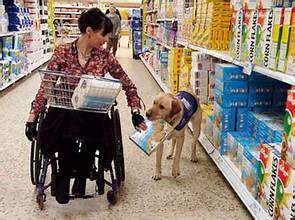What Is the Most Common Therapy Animal?
The most common therapy animal is the dog.
While a variety of animals such as cats, rabbits, miniature horses, and even birds are used in therapeutic settings, dogs are by far the most frequently chosen for therapy work. Their intuitive nature, trainability, and deep bond with humans make them ideal companions for those in need of emotional, psychological, or physical support.
🐶 Why Dogs Are the Most Common Therapy Animals
Dogs have earned their place as the leading therapy animal for several compelling reasons:
1. Emotional Intelligence
Dogs are naturally empathetic and often sense when someone is upset or anxious. They may nuzzle, sit close, or offer gentle physical contact, providing comfort without saying a word.

2. Trainability
Therapy dogs undergo specialized training to remain calm, friendly, and non-reactive in unfamiliar environments such as hospitals, schools, or nursing homes. Their obedience and responsiveness make them reliable partners in therapeutic programs.
3. Social Bonding
Interacting with dogs helps people feel more connected and less isolated. For children with autism, veterans with PTSD, or seniors in assisted living, a therapy dog can bridge the gap between loneliness and connection.
4. Physical Benefits
Petting a dog can lower blood pressure, reduce heart rate, and decrease cortisol (the stress hormone). For people recovering from surgery, illness, or trauma, this physiological response can aid healing.
🏥 Where Therapy Dogs Make a Difference
Therapy dogs, unlike service animals or emotional support animals, work in structured settings to bring relief and joy to others.

Common Places Therapy Dogs Are Found:
- Hospitals and rehabilitation centers
- Nursing homes and hospice care facilities
- Schools and special education classrooms
- Disaster zones and crisis response teams
- Libraries and reading programs for children
- Mental health clinics and therapy offices
🐾 Other Common Therapy Animals (Honorable Mentions)
While dogs top the list, other animals also provide effective therapy in different contexts:

- Cats: Known for their soothing presence and purring, they are often used in elder care or home visits.
- Rabbits and Guinea Pigs: Gentle, small, and non-threatening—perfect for children or individuals with sensory sensitivities.
- Miniature Horses: Used in equine therapy or hospital visits, especially in areas where dogs may not be allowed.
- Birds: Parrots and other talkative birds can stimulate conversation and offer companionship.

✅ What Makes a Good Therapy Dog?
Not every dog is cut out for therapy work. Ideal therapy dogs usually have:
- A calm, non-aggressive temperament
- Good manners and obedience
- A love for people and new experiences
- The ability to remain relaxed in chaotic environments
They must also be certified by an accredited organization, such as:
- Pet Partners
- Alliance of Therapy Dogs
- Therapy Dogs International (TDI)
Final Thoughts: The Healing Power of a Friendly Paw
Dogs have been our companions for thousands of years, nd today, their loyalty and kindness make them the most common and beloved therapy animal. Whether offering comfort during a hospital stay, helping children learn to read, or soothing anxiety after trauma, therapy dogs prove that sometimes the best medicine is a wagging tail and a warm heart.



